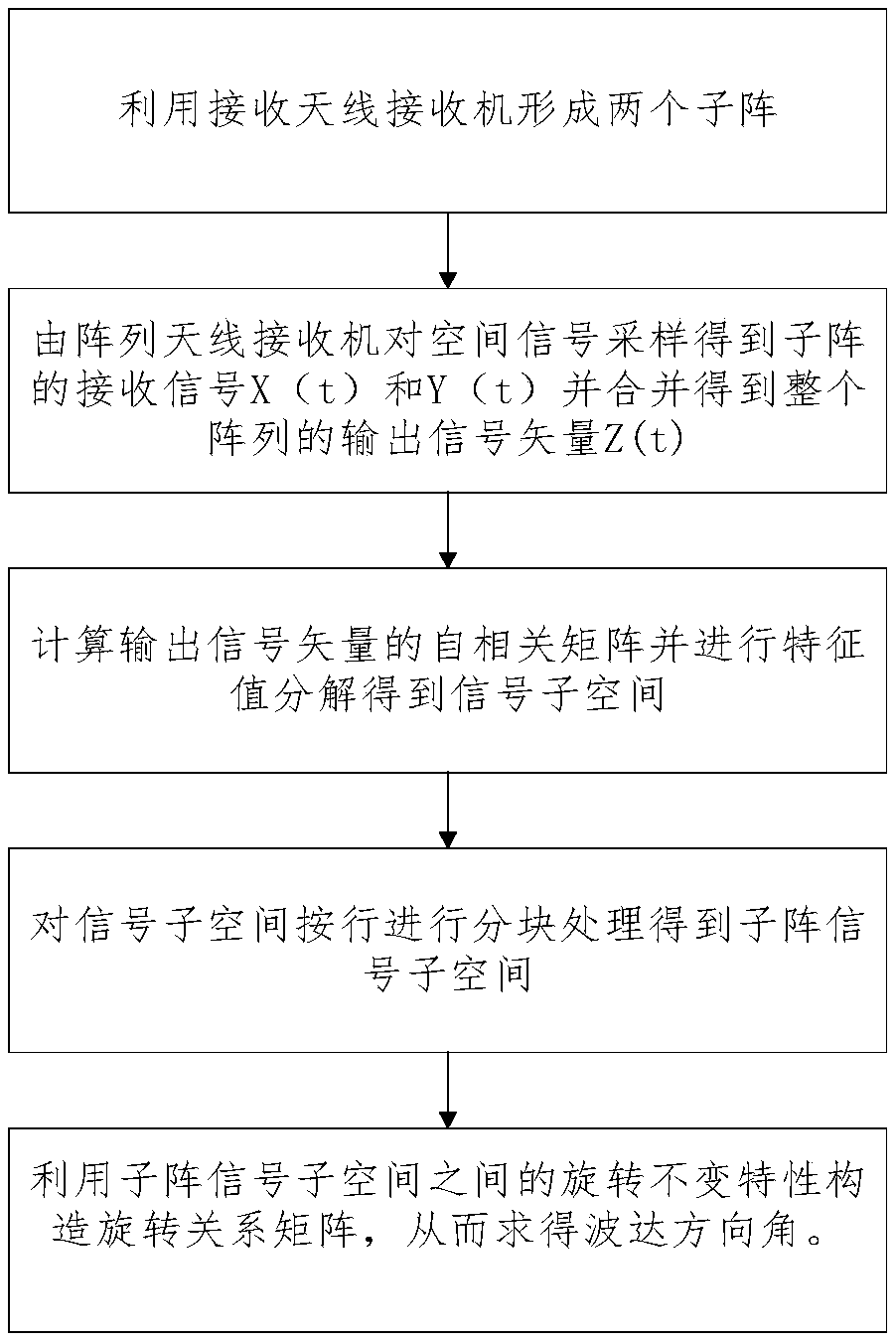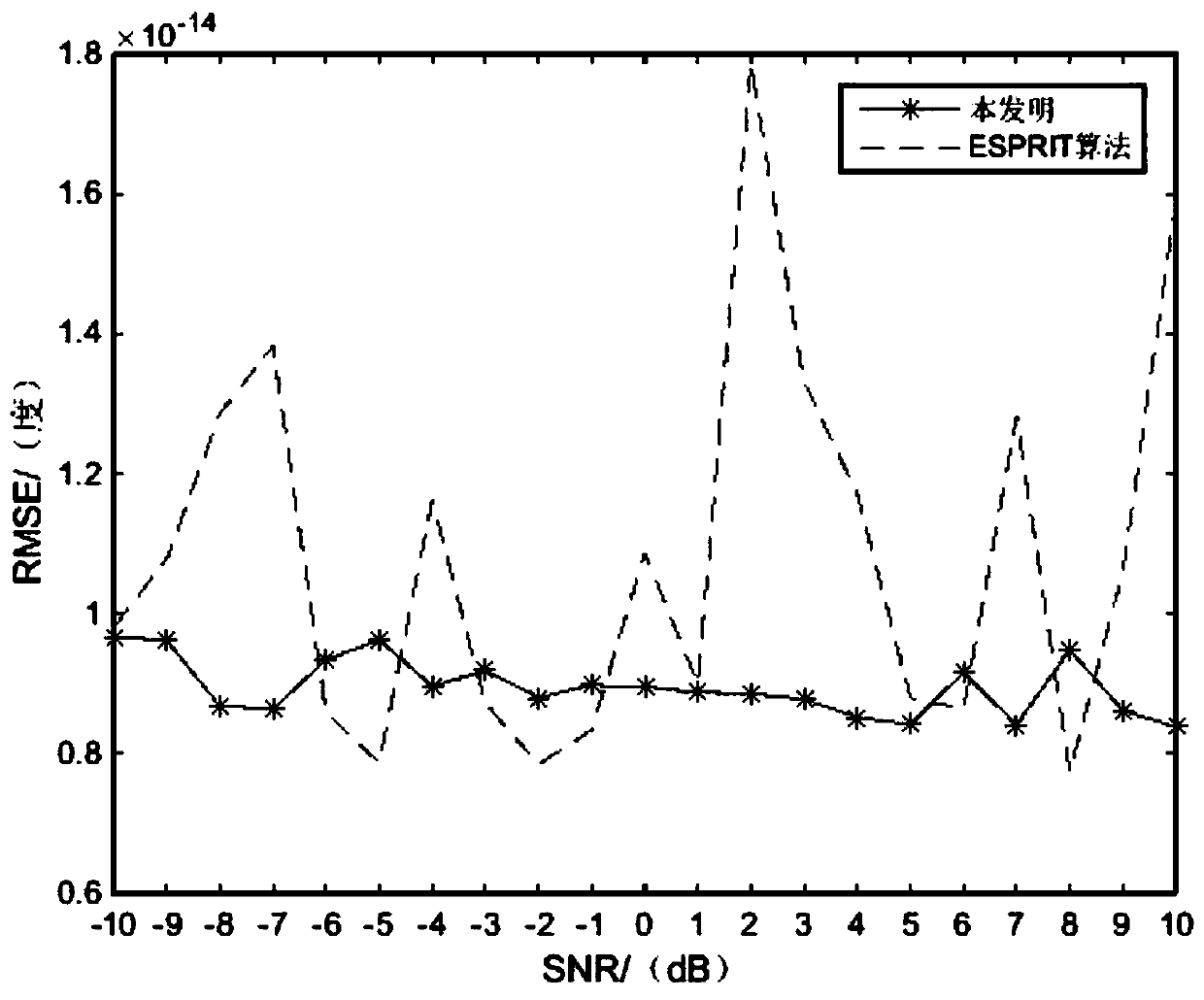Arrival direction estimation algorithm based on rotation characteristic of signal subspace
A technology of direction of arrival estimation and signal subspace, applied in the field of signal processing, can solve problems such as poor estimation stability, and achieve the effects of reducing dimension, reducing computational complexity, improving low signal-to-noise ratio and fewer snapshots
- Summary
- Abstract
- Description
- Claims
- Application Information
AI Technical Summary
Problems solved by technology
Method used
Image
Examples
Embodiment 1
[0033] Embodiment 1: as figure 1 As shown, a DOA estimation algorithm based on the rotation characteristics of the signal subspace, the specific steps are as follows:
[0034] Step 1: Form two sub-arrays using the antenna receiver
[0035] Place a pair of antenna receivers at every distance d, each pair of receivers contains two array elements with exactly the same response characteristics, and the distance between the array elements is the known displacement vector Δ, a total of M are placed to form a uniform linear array, and the array is divided into are two sub-arrays X and Y with a translation vector of Δ, and the sub-arrays X and Y are respectively composed of x 1 ,x 2 ,...x M and y 1 ,y 2 ,...y M constitute. Assume that there are P far-field narrowband signals incident on the uniform linear array, and Gaussian white noise with zero mean value is added to the signal during propagation, where M≥P, λ is the wavelength of the incident signal.
[0036] Step 2: Samp...
Embodiment 2
[0062] Embodiment 2: Calculate according to the method in Embodiment 1, wherein a uniform line array composed of 8 omnidirectional array elements is considered, the number of sub-array elements is 7, and the output of the first 7 array elements is expressed as sub-array 1 , the output of the last 7 array elements is represented as sub-array 2, the array element spacing is 0.5, and the search range of the spatial angle is [-90° 90°].
[0063] The formula for calculating the mean square error is:
[0064] In the formula, I represents the number of Monte Carlo experiments, Indicates the direction of arrival angle of the i-th trial, θ p Indicates the true direction of arrival of the signal.
[0065] Simulation 1: Assume that three independent signal sources are incident on the equidistant uniform linear array at an angle [-60° 0° 30°], and the number of sampling points is 100, so that the signal-to-noise ratio increases from -10dB to 10dB, and each signal Carry out 50 indepe...
PUM
 Login to View More
Login to View More Abstract
Description
Claims
Application Information
 Login to View More
Login to View More - R&D
- Intellectual Property
- Life Sciences
- Materials
- Tech Scout
- Unparalleled Data Quality
- Higher Quality Content
- 60% Fewer Hallucinations
Browse by: Latest US Patents, China's latest patents, Technical Efficacy Thesaurus, Application Domain, Technology Topic, Popular Technical Reports.
© 2025 PatSnap. All rights reserved.Legal|Privacy policy|Modern Slavery Act Transparency Statement|Sitemap|About US| Contact US: help@patsnap.com



